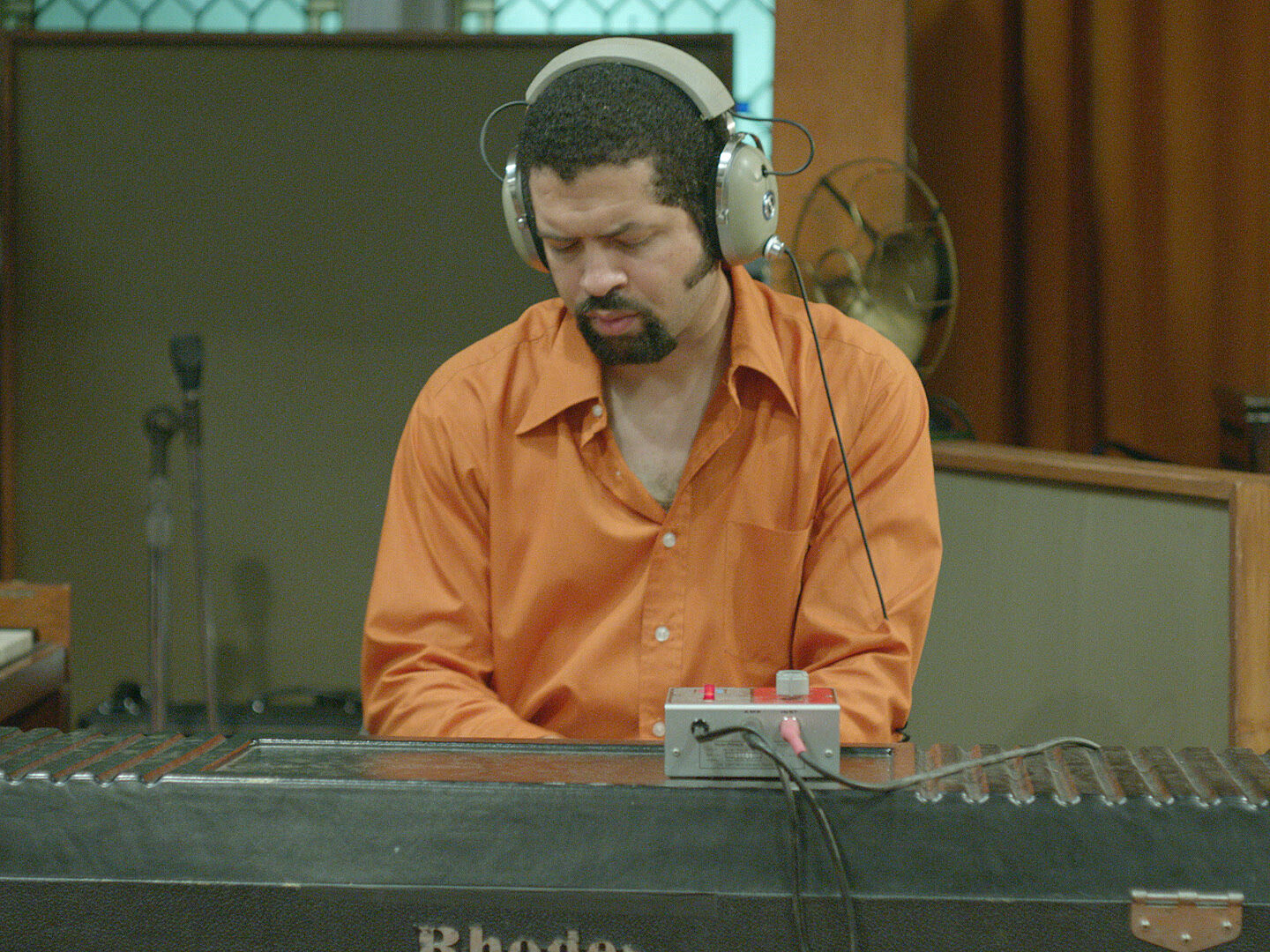Jason Moran | Art & Artists
Sept 20, 2019–Jan 5, 2020
Jason Moran | Art & Artists
Collaborations
4
Collaboration has been central to Moran’s experiments, and among the many artists with whom he has collaborated include The Bandwagon (Tarus Mateen and Nasheet Waits), Stan Douglas, Lizzie Fitch, Theaster Gates, Joan Jonas, Glenn Ligon, Julie Mehretu, Ashland Mines (Total Freedom), Alicia Hall Moran, Adam Pendleton, Adrian Piper, Lorna Simpson, Ryan Trecartin, Kara Walker, and Carrie Mae Weems.
Stan Douglas
Luanda-Kinshasa, 2013
Stan Douglas’s films, photographs, and installations often reexamine past events at specific sites. His intricately composed jazz film Luanda-Kinshasa is set in a reconstruction of Columbia Records’ 30th Street Studio in New York. Operated by the record label between 1948 and 1981, “The Church,” as it was known, produced such groundbreaking albums as Miles Davis’s Kind of Blue (1959) and Pink Floyd’s The Wall (1979). Luanda-Kinshasa documents a fictional recording by ten musicians selected by the artist and Jason Moran. They improvise collaboratively, following Douglas’s prompt to imagine what Davis might have done after his 1971 record Live-Evil.
Dividing the room into two areas, Douglas shot half of the film during one session and the other half the following day. In order for this strategy to work musically, Moran made the songs interchangeable, formulating a way for the music to flow together seamlessly. The film itself combines and recombines edits to allow for musical variations, emphasizing a compositional process that defies expectations of a linear narrative.

